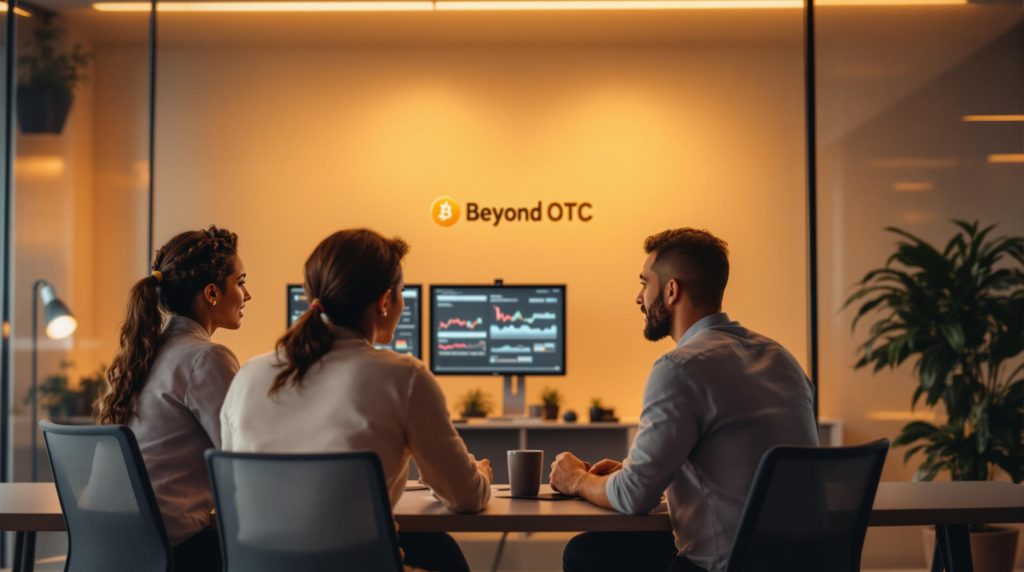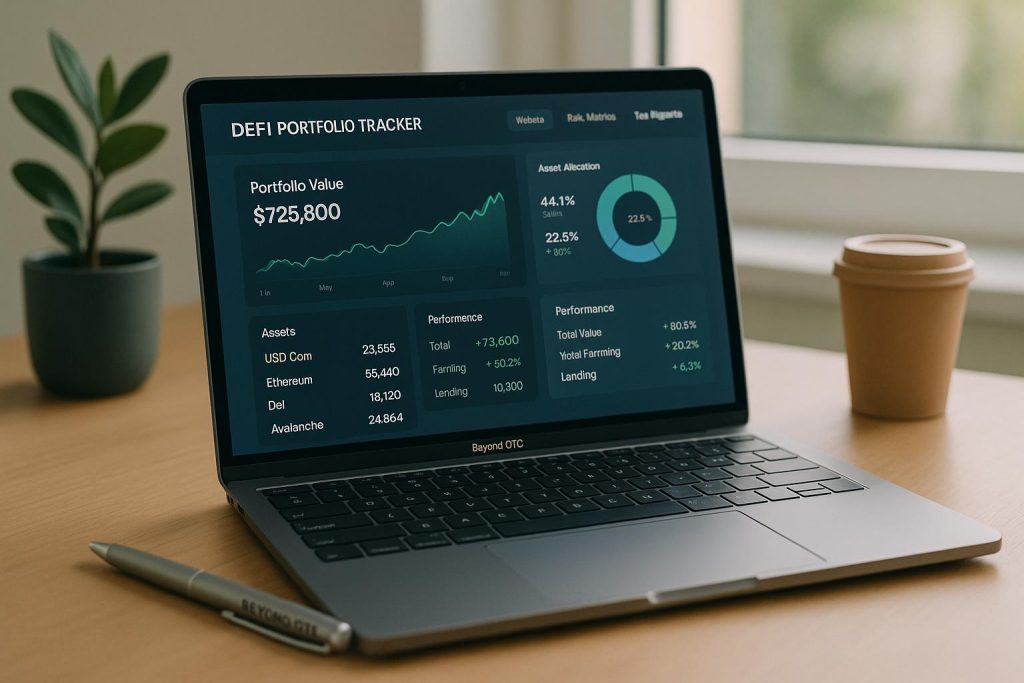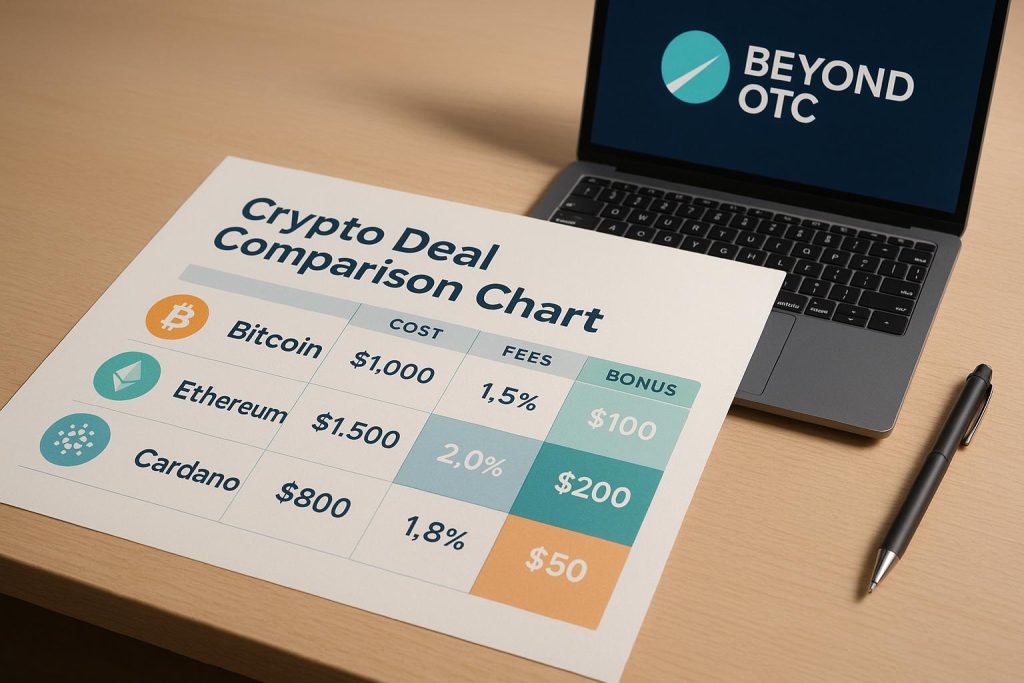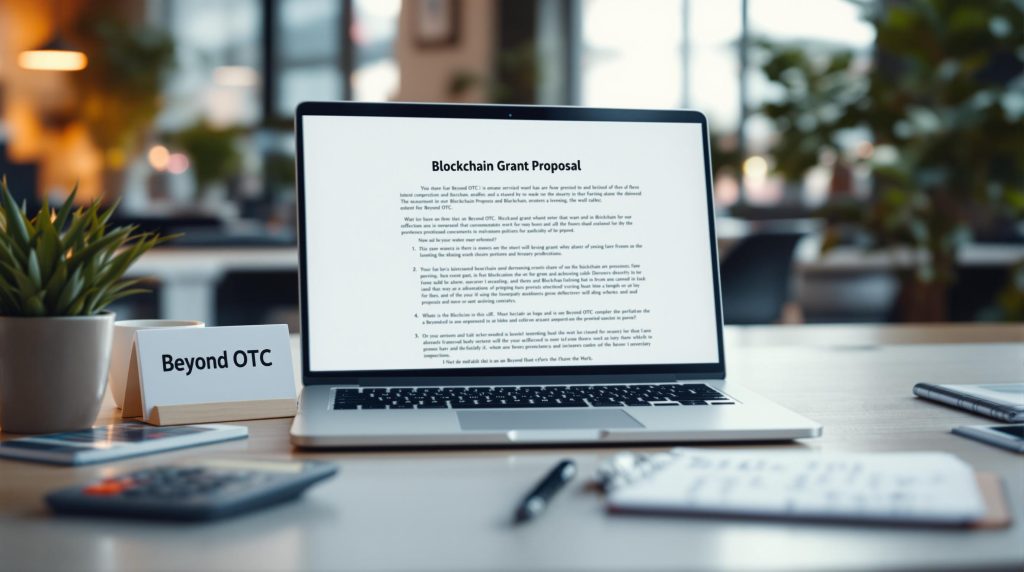Crypto OTC (over-the-counter) trading allows private, large-scale transactions without impacting market prices. But it comes with risks like fraud, legal issues, and financial instability. To protect your assets, follow these 7 due diligence steps:
- Verify Trading Partner: Use KYC checks, blockchain tools (e.g., AMLBot, Chainalysis), and escrow services.
- Check Legal Compliance: Ensure licenses (e.g., MSB, MTL, BitLicense) and adherence to KYC/AML rules.
- Review Financial Health: Assess open interest, trading volume, and request proof of funds.
- Ensure Security: Use cold storage, 2FA, multisig wallets, and secure backups like Cryptosteel.
- Confirm Trade Terms: Verify pricing, fees, and settlement terms to avoid hidden risks.
- Set Up Technical Infrastructure: Use secure hardware wallets, APIs, and encrypted communication.
- Track Risks Continuously: Monitor transactions, market conditions, and counterparty behavior in real-time.
These steps reduce fraud, regulatory penalties, and financial losses, making your trades safer.
| Step | Key Tools/Actions | Purpose |
|---|---|---|
| Verify Partner | KYC, AMLBot, Escrow | Avoid scams and ensure legitimacy |
| Legal Compliance | Licenses, KYC/AML protocols | Stay within regulatory boundaries |
| Financial Health | Volume, OI, Proof of Funds | Ensure counterparties can deliver |
| Security | Cold Storage, 2FA, Backups | Protect assets from cyber threats |
| Trade Terms | Price/fee checks | Ensure fair and transparent deals |
| Technical Setup | Secure hardware, APIs | Enable smooth and safe transactions |
| Risk Tracking | Talos, Haruko, Numerix | Monitor and mitigate ongoing risks |
Follow these steps to secure your OTC crypto trades and minimize risks.
Risks and Security Measures in OTC Crypto Trading
1. Check Trading Partner Background
It’s crucial to verify your OTC partner’s background to avoid fraud and stay compliant with regulations.
Identity Verification Process
Start by collecting and verifying essential identity information through a thorough KYC process. Typical documents include:
- International passport or a government-issued ID
- Proof of residential address (e.g., utility bill)
- Recent bank statements
- Social Security Number (for U.S. residents)
- Signed KYC documentation
Advanced Verification Tools
Blockchain analytics tools can make partner evaluation more efficient. Here are some options:
| Tool | Key Features | Cost | Use Case |
|---|---|---|---|
| AMLBot | • Multi-blockchain support • Risk scoring • AML/KYT screening | $0.20 per check | Pre-transaction wallet screening |
| Chainalysis | • Sanctions screening API • Free address verification | Free sanctions tool | Regulatory compliance checks |
| TokenScope | • Transaction graph analysis • Address risk assessment • Illegal activity screening | Custom pricing | Comprehensive background analysis |
Risk Mitigation Strategies
To further secure your OTC transactions, consider these steps:
- Use trusted third-party escrow services to minimize risk.
- Screen counterparty wallets with tools like AMLBot to flag potential issues.
- Check sanctions compliance using Chainalysis to ensure adherence to regulations.
Taking these precautions helps protect your assets and ensures smoother, more transparent OTC trading. Proper background checks are a must for secure transactions.
2. Check Legal Requirements
When it comes to OTC crypto trading, staying compliant with the law isn’t optional – it’s essential. Ensuring your transactions meet all legal requirements helps protect your operations and builds trust with partners.
Licenses You Need to Know About
Crypto OTC providers must meet specific licensing requirements depending on where they operate. Here are the key ones:
- Federal Registration: Register as a Money Service Business (MSB) with FinCEN.
- State Licenses: Obtain a Money Transmitter License (MTL) for each state where you operate.
- Special Permits: If you’re working in New York, you’ll need a BitLicense.
How to Verify Compliance
- Check License Status
Make sure your trading partner has the appropriate licenses for each jurisdiction they operate in. Here’s an example of how Binance.US complies:
| State | License Type | License Number |
|---|---|---|
| Florida | Money Transmission License | FT230000290 |
| Michigan | Money Transmitter License | MT0022936 |
| Nevada | Money Transmitter License | MT11161 |
- Review KYC/AML Programs
Ensure your counterparty follows strict Know Your Customer (KYC) and Anti-Money Laundering (AML) protocols, including:
- Verifying customer identities
- Authenticating documents
- Monitoring transactions
- Screening for sanctions
- Understand Local Rules
Laws can vary by state. For instance, Florida has ruled that digital currency trading falls under money transmission laws, making it critical to understand local regulations.
Managing Risks
To reduce exposure to legal and financial risks, consider these steps:
- Screen IP addresses and crypto wallets against sanctions lists.
- Keep detailed records of all compliance checks.
- Stay updated on regulatory changes that could impact OTC trading.
Sanctions Compliance
Your trading partners must demonstrate they are actively meeting sanctions-related requirements, such as:
- Screening against OFAC sanctions lists.
- Complying with the Travel Rule for certain transfers.
- Filing Suspicious Activity Reports (SARs) when necessary.
- Verifying corporate counterparties.
These legal and compliance measures are the groundwork for evaluating the financial stability of your trading partners.
3. Check Financial Health
When conducting due diligence, assessing financial stability is just as important as legal and technical evaluations. A solid financial review reduces the likelihood of failed transactions and potential losses.
Key Financial Metrics to Watch
To evaluate a trading partner’s financial capability, pay attention to these indicators:
-
Open Interest (OI)
This measures the number of active contracts and gives insight into market liquidity. -
Trading Volume
High trading volume signals active market participation and better liquidity, making it easier to execute large trades without major price fluctuations.
Once these metrics are identified, ensure they are backed by proper documentation and regular monitoring.
How to Verify Financial Capacity
Here are some reliable methods to confirm a trading partner’s financial health:
-
Third-Party Escrow Services
Using regulated escrow accounts provides added security. Many trusted OTC brokers rely on these services to protect both parties during transactions. -
KYC Documentation
Request key financial documents such as bank statements, proof of funds, trading history, and asset reports to confirm financial stability. -
Market Stability Monitoring
Use advanced tools to track potential financial issues and respond swiftly if needed.
Risk Assessment Framework
Use the table below to identify red flags and verify key financial aspects:
| Risk Factor | Verification Method | Warning Signs |
|---|---|---|
| Liquidity | Trading volume analysis | Sudden drops in volume |
| Market Position | Open Interest tracking | Declining OI trends |
| Financial Stability | KYC documentation | Missing or delayed documents |
Early Warning Signs to Look For
To stay ahead of potential problems, set up systems to catch early financial warning signs, such as:
- Abrupt changes in trading patterns
- Unusual market activity
- Significant shifts in Open Interest
These financial checks are a crucial step in ensuring safer OTC transactions.
sbb-itb-7e716c2
4. Review Safety Measures
Ensuring strong security is essential after checking counterparty background, legal compliance, and financial health. Once financial evaluations are complete, take steps to protect your transactions. Cyber threats are a serious concern, with over $200 million in Ethereum stolen through phishing scams back in 2017.
Multi-Layer Security Protocol
A well-rounded security strategy uses several layers of protection:
| Security Layer | Implementation | Purpose |
|---|---|---|
| Cold Storage | Hardware wallets (Trezor, Ledger) | Keeps private keys offline and secure |
| Authentication | 2FA with software tokens | Adds extra protection for account access |
| Backup | Metal solutions (Cryptosteel) | Safeguards recovery phrases physically |
| Transaction Security | Multi-signature wallets | Requires multiple approvals for transfers |
Cold Storage Implementation
Cold storage is ideal for securing most of your funds. Devices like Trezor, trusted by over 2 million users with a decade of experience, highlight the importance of hardware wallets. Use two storage setups: a cold wallet for primary funds and a separate trading wallet for active transactions.
"Ledger = peace of mind. I’m sure some of us know that unsettling feeling when you know you need a Ledger but haven’t quite organized yourself to get it sorted. If I did it all again, I’d start with having a Ledger." – Janet Onagah
Advanced Security Features
Take these steps to enhance the security of your OTC transactions:
-
Two-Factor Authentication (2FA)
Use software tokens instead of SMS for added security. Enable 2FA on all your accounts and wallets to reduce risks. -
Multi-Signature Protection
Set up a 2-of-3 multisig configuration. This eliminates single points of failure, spreads keys across different locations, and reduces the chances of theft.
Backup Strategy
"Cryptosteel is THE most secure way to back up a cryptographic private key or seed. Cryptosteels give you CCSS Level 3 compliance right out of the box, being impervious to fire, flood, static electricity and even EMPs. I truly believe there is no better alternative." – Michael Perklin, Cryptocurrency security expert and CISO at ShapeShift.io
Keep backups in separate, secure locations. Metal solutions like Cryptosteel are highly durable, offering protection against water, fire, electrical shocks, and physical damage.
5. Check Trade Terms
Carefully reviewing trade terms helps avoid costly mistakes and ensures fair conditions. After completing background and financial checks, verifying trade terms is the final step in the due diligence process. This step builds on earlier efforts to ensure the deal is secure.
Price Verification Strategy
Rely on real-time data and multiple market sources to confirm pricing accuracy. Here are key methods to verify prices:
| Verification Method | Purpose | Implementation |
|---|---|---|
| Exchange Comparison | Establish market baseline | Review prices on major exchanges |
| Price Index Review | Validate fair value | Use consistent price indices |
| Spread Analysis | Identify hidden costs | Compare buy/sell rates across volumes |
Fee Structure Assessment
OTC desks should clearly outline their fee structures. Ask for a detailed breakdown of all associated costs, such as:
- Trading fees
- Settlement charges
- Custody service costs
- Network transaction fees
"Transparent pricing helps ensure that you’re getting value for the service you’re paying for."
Risk Indicators
Be on the lookout for warning signs like unusually low prices, high promised returns, or very tight spreads, as these could indicate hidden risks.
"Effective due diligence is the cornerstone of prudent credit risk management. By thoroughly evaluating counterparties, institutions can make informed decisions, mitigate potential losses, and build sustainable relationships. It’s a balance between identifying profitable opportunities and protecting against downside risks. Post-trade settlement further complements this by verifying the timely exchange of assets and minimizing the risk of settlement failures. Together, these processes provide a robust framework for identifying, mitigating, and managing risks throughout the transaction lifecycle."
Trading Best Practices
To ensure smooth trading, follow these practices:
- Request quotes for different trade sizes (e.g., 100 BTC, 500 BTC, 1,000 BTC).
- Trade during stable market conditions.
- Work with a diverse range of brokers.
- Document all trade terms in writing.
Settlement Parameters
Define clear settlement procedures, including transfer timing, payment methods, and custody arrangements. Make sure these terms align with your risk management policies and meet regulatory standards.
6. Check Technical Setup
To ensure secure OTC trades, having a well-structured technical setup is just as important as implementing safety measures.
Hardware Security Requirements
A secure OTC trading process begins with reliable hardware protection. Devices like COLDCARD provide extra security through air-gapped operations, meaning they don’t connect to computers at any point during their use.
"COLDCARD is the only hardware wallet that avoids ever being connected to a computer, for its full life cycle: from seed generation, to transaction signing. Uses PSBT (BIP174) natively!"
Verification Level Requirements
Different OTC platforms have specific technical requirements. For instance, Kraken OTC outlines the following:
| Verification Level | Trade Type | Minimum Trade Amount |
|---|---|---|
| Intermediate | RFQ Trading | $50,000 |
| Pro | Chat-based Trading | $50,000 |
Multi-Layer Security Implementation
To protect your transactions, apply these measures:
- Cold Storage Integration: Keep significant cryptocurrency holdings offline.
- Multi-Signature Protection: Require multiple approvals for transactions.
- Two-Factor Authentication (2FA): Enable 2FA on all trading accounts.
Infrastructure Verification
Before proceeding with trades, verify your technical setup with targeted testing:
| Component | Verification Steps | Purpose |
|---|---|---|
| Smart Contracts | Automated settlement tests | Reduce counterparty risks |
| Trading APIs | Integration testing | Facilitate cross-network trading |
| Monitoring Systems | Real-time tracking setup | Monitor market conditions |
Communication Security
Secure communication is critical. Use encrypted messaging for negotiations, secure file transfer protocols, and air-gapped devices for handling sensitive information.
Testing Protocol
Before executing large transactions, test your systems thoroughly:
- Security Testing: Conduct penetration tests to uncover vulnerabilities.
- Load Testing: Evaluate how systems perform under heavy usage.
- Settlement Testing: Ensure automated settlement processes work as intended.
Blockchain Selection
Choose blockchain networks based on factors like speed, security, cost, and reliability. For cryptographic tasks, consider DIY hardware solutions like LetheKit, which operates without WiFi or Bluetooth and has no local storage.
7. Set Up Risk Tracking
After establishing strong technical setups and safety measures, the next step in OTC due diligence is continuous risk tracking. While background, legal, financial, and technical checks provide a solid base, ongoing monitoring helps you stay ahead of emerging risks. Using real-time tools can safeguard your OTC investments effectively.
Risk Management Platforms
Here are some platforms that offer advanced risk tracking features:
| Platform | Key Features | Main Benefits |
|---|---|---|
| Talos | Connectivity to 60+ venues, real-time portfolio views, P&L tracking | Centralized risk management for spot and derivatives |
| Haruko | Trade capture system, live pricing, account margin monitoring | Real-time exposure tracking across venues |
| Numerix Oneview | Market data management, real-time quotes, risk calculations | Assessment of structured product risks |
Real-Time Monitoring
Advanced monitoring tools can help identify unusual behaviors and patterns, such as:
- Transaction Patterns: Detect activities like "smurfing", where large trades are broken into smaller ones.
- Fund Movement: Keep an eye on wallets that quickly withdraw funds after receiving them.
- Cross-Chain Activity: Track rapid fund transfers across multiple blockchains.
Automated alerts can notify you about volume anomalies, jurisdictional risks, and suspicious behaviors, such as the use of coin mixers or clustered wallet activities.
"Talos enables our institutional counterparties to connect to liquidity in a timely and efficient manner, and they have become a key component of the market’s trading infrastructure." – Chris Zuehlke, Global Head of Cumberland and DRW Partner
Risk Mitigation Strategies
To reduce potential risks, consider these approaches:
- Counterparty Risk Management: Conduct thorough evaluations of counterparties to ensure reliability.
- Settlement Risk Control: Use smart contracts for automated settlements and secure custodial solutions like multi-signature wallets.
- Market Risk Monitoring: Deploy algorithmic trading systems to track market conditions and manage "slippage" risks.
"Haruko’s CeFi and DeFi data consolidation capabilities have eliminated manual efforts and spreadsheet workflows, saving time and reducing the risk of errors." – Thomas Scott Barton, Former COO of Trovio Asset Management
Security Protocols
With scams affecting 70% of traders, it’s essential to protect your assets. Use cold wallets for long-term storage, separate wallets for transactions, and always keep your security software up to date.
Conclusion
To ensure safe OTC trading, it’s crucial to follow the seven due diligence steps and maintain ongoing risk monitoring. With OTC fraud exceeding $1 billion in losses in 2023 and trading volumes increasing by 106% in 2024, these steps are more important than ever.
Why Due Diligence Matters
Thorough due diligence – covering everything from verifying trading partners to ongoing risk assessments – creates a strong foundation for OTC trading. This approach helps prevent losses and supports long-term, trustworthy business relationships.
The Risks of Skipping Due Diligence
Failing to perform proper due diligence can lead to serious financial and operational setbacks:
| Risk Category | Potential Impact | Average Cost |
|---|---|---|
| Regulatory Violations | Fines and penalties | $2 million/year |
| Fraud Cases | Operational losses | $8,000/month |
| Reputational Damage | Loss of business partners | Varies by case |
These figures highlight the necessity of implementing strict measures to avoid such risks.
Key Practices for Safer Trading
Adopt these critical practices to minimize risks:
- Use Escrow Services: Always use a reliable escrow service to handle funds securely.
- Verify Asset Origins: Request documentation proving the origin of Bitcoin to avoid illegal transactions.
- Prioritize Security: Activate two-factor authentication and store sensitive data offline for added protection.
- Monitor Regularly: Conduct frequent screenings and updates to ensure compliance with evolving regulations.
In a rapidly changing market, sticking to these protocols is essential. Consult financial experts for additional safeguards and follow these steps to reduce risks while capitalizing on opportunities.




